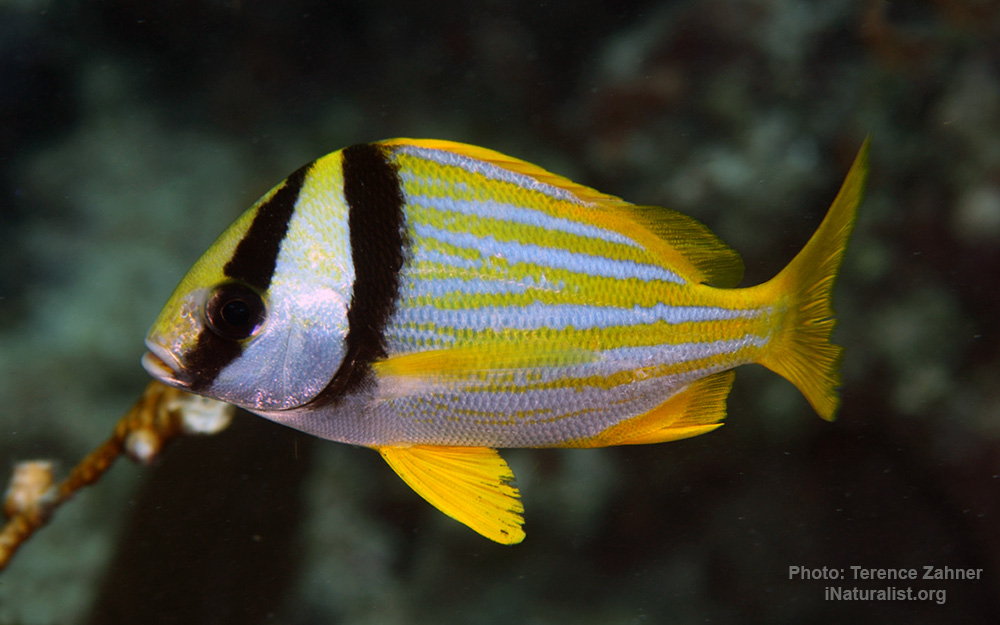Porkfish
(Anisotremus virginicus)

Classification
General data
Anisotremus virginicus, the porkfish, also known as the Atlantic porkfish sweetlips, dogfish or paragrate grunt, is a species of marine ray-finned fish, a grunt belonging to the family Haemulidae. It is native to the western Atlantic Ocean.
Description
Anisotremus virginicus has a deep, compressed body with a very high back and a short, blunt head. The mouth is positioned low on the head, it is horizontal with fleshy lips and the jaws are equipped with bands of teeth on both jaws. The outer band of teeth are conical in shape. The flanks are marked with alternating yellow and silver stripes. There is a black bar running diagonally from over the eye to the upper lip and a second, vertical black bar runs from the front of the dorsal fin to the base of the pectoral fin. They have yellow fins, the caudal fin is deeply forked. The juveniles do not have the two black bars and have two black stripes which run horizontally along the middle of the flanks and a black blotch close to the caudal fin base and the head is vivid yellow. The dorsal fin contains 12 spines and 16-18 soft rays while the anal fin contains 3 spines and 9 soft rays.
This species attains a maximum total length of 40.6 cm (16.0 in), although 25 cm (9.8 in) is mote typical, and the maximum published weight is 930 g (33 oz).
Distribution
Anisotremus virginicus is found in the western Atlantic Ocean from northeastern Florida south along its Atlantic coast to the Bahamas, then westwards into the Gulf of Mexico from the Florida Keys north to New Port Richey on Floridas Gulf coast. Within the Gulf it is found at the Flower Garden Banks and on the Mexican coast as far south as the northern Yucatan Peninsula and also northwestern Cuba. It then ranges southwards throughout the Caribbean Sea, to South America as far south as Rio de Janeiro. It can also be found at Fernando de Noronha and Atoll das Rocas. It is found at Bermuda where it was introduced.











